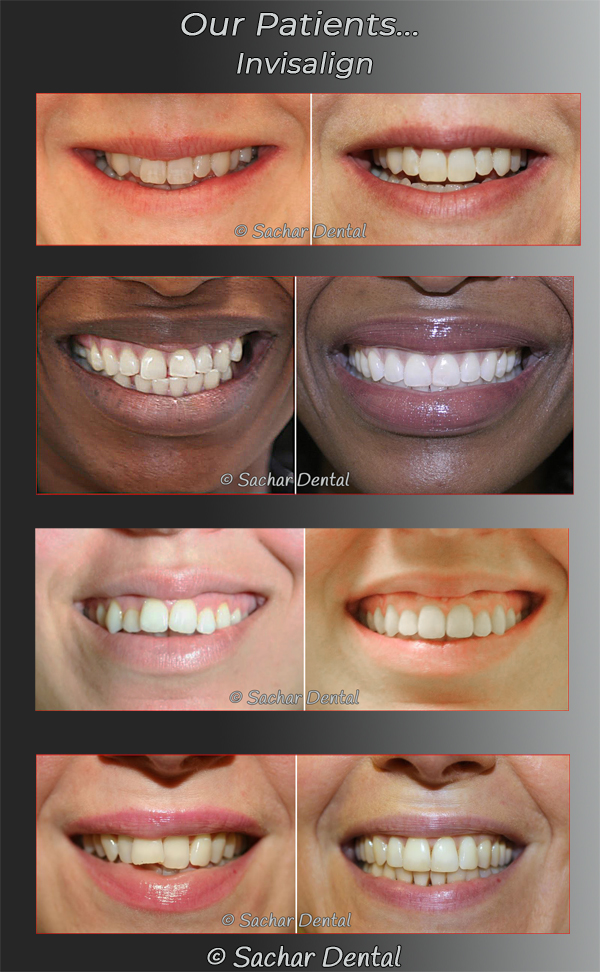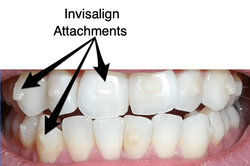Leading Factors to Pick Invisalign Over Other Orthodontic Treatments
Leading Factors to Pick Invisalign Over Other Orthodontic Treatments
Blog Article
Invisalign vs. Standard Dental braces: Which Option Is Right for You?
When taking into consideration orthodontic treatment, the selection in between Invisalign and typical braces offers a number of crucial factors that warrant cautious evaluation. Invisalign provides a very discreet alternative with removable aligners, while typical dental braces offer a much more noticeable yet effective service for severe imbalance.
Overview of Treatment Alternatives

On the other hand, traditional dental braces are composed of steel braces and cords that are adhered to the teeth. This method uses continuous pressure in time to attain alignment. While efficient for intricate orthodontic issues, conventional braces call for normal gos to for changes and can position obstacles in preserving dental hygiene due to the difficulty of cleansing around braces and cords.
Both alternatives have their merits, and the option usually rests on specific dental conditions, way of living preferences, and client conformity. Eventually, consulting an orthodontic specialist is vital for figuring out one of the most appropriate therapy strategy tailored to specific requirements. Comprehending the subtleties of each choice can considerably affect the overall success of orthodontic treatment.
Aesthetic Factors To Consider
A considerable factor influencing the choice between Invisalign and typical braces is the aesthetic allure each therapy offers. Invisalign aligners are crafted from clear plastic, making them essentially undetectable when put on.
On the other hand, conventional braces contain steel brackets and cords, which can be much more noticeable. While developments in orthodontic technology have resulted in the growth of smaller sized braces and colored elastics, typical dental braces still preserve an even more conspicuous account. For some people, the exposure of braces might hinder them from seeking needed therapy.
Eventually, the selection in between Invisalign and standard dental braces may rest on individual preferences concerning aesthetic appeals. Patients that prioritize discernment usually favor Invisalign, while those who are much less worried concerning presence might go with conventional dental braces. Comprehending the aesthetic implications of each alternative is important for making a notified decision that straightens with one's lifestyle and preferences.
Convenience and Convenience

In regards to benefit, Invisalign aligners are detachable, making it possible for individuals to appreciate their favored foods without restriction and keep optimal oral health. Brushing and flossing are streamlined, as the aligners can be taken out during these routines, whereas traditional braces call for cautious maneuvering around braces and wires.
In comparison, traditional braces demand routine modifications, making them less practical for those with hectic routines. Generally, the convenience and convenience of Invisalign make it an appealing choice for lots of people seeking orthodontic treatment.
Treatment Period and Effectiveness
While both Invisalign and traditional dental braces work in correcting oral misalignments, the duration of therapy can differ dramatically between both choices. Typically, Invisalign therapy can take anywhere from 12 to 18 months, relying on the complexity of the instance. The clear aligners work by slowly changing teeth into their preferred positions, and browse this site routine follow-ups with an orthodontist aid make certain progression continues to be on the right track.
On the other hand, standard braces commonly require a longer dedication, usually varying from 18 months to 3 years. This results from their set nature and using brackets and cables, which can be much more reliable for complex situations and serious misalignments (Invisalign). The therapy effectiveness of conventional braces is well-documented, as they enable precise modifications and greater control over tooth movement
Eventually, the selection in between Invisalign and standard dental braces may hinge on both the awaited treatment duration and the specific dental concerns at hand. Consulting with an orthodontist is essential, as they can supply tailored recommendations based on specific needs, ensuring the picked approach straightens with preferred results and durations.
Expense Comparison and Insurance Coverage Alternatives
Price plays a substantial function in the decision-making procedure for individuals considering orthodontic my company treatment, whether choosing for Invisalign or conventional dental braces. On standard, the price of Invisalign varieties from $3,000 to $8,000, while typical dental braces typically cost between $2,000 and $6,000. Elements affecting these expenses consist of the complexity of the case, the period of treatment, and geographical location.
Insurance insurance coverage can dramatically impact out-of-pocket expenditures. Several dental insurance coverage strategies supply partial coverage for orthodontic therapies, but the specifics can differ commonly. It is essential for people to examine their insurance policies to figure out the level of protection for either choice. Normally, conventional braces might be a lot more regularly covered by insurance coverage plans contrasted to Invisalign, which some insurance firms classify as a cosmetic treatment.
Additionally, several orthodontic techniques supply adaptable settlement strategies, making both treatment choices much more easily accessible. Individuals should ask about prospective financing options and discounts for in advance settlements. Evaluating the overall expense, consisting of insurance policy advantages and settlement plans, is important for making a notified choice that lines up with both visual preferences and budget factors to consider.

Conclusion
In recap, the option between Invisalign and standard braces pivots on several elements, consisting of aesthetic preferences, convenience, treatment period, and cost. Invisalign provides a discreet, removable option that assists in oral hygiene and nutritional versatility, while conventional dental braces might be preferable for intricate dental concerns and often come at a reduced price factor. Inevitably, consultation with an orthodontist is vital to examine private conditions and identify the most ideal treatment alternative for accomplishing optimal oral placement.
When taking into consideration orthodontic therapy, the selection between Invisalign and standard braces offers a number of vital factors that warrant careful analysis.Contrasting Invisalign and traditional braces reveals distinctive therapy choices for orthodontic modification.While both Invisalign and typical braces are efficient in correcting dental misalignments, the period of therapy can vary considerably in between the 2 alternatives.Price plays a substantial duty in the decision-making procedure for individuals considering orthodontic therapy, whether deciding for Invisalign or standard braces.In recap, visit their website the option in between Invisalign and typical braces pivots on numerous variables, consisting of visual preferences, convenience, therapy period, and cost.
Report this page